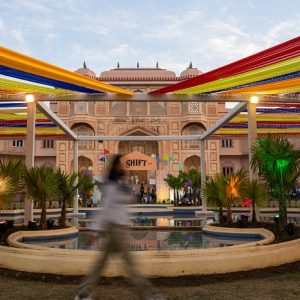More than 16.56 lakh birds representing over 200 species were observed during a mid-winter census conducted across Odisha’s three key wetlands—Chilika Lake, Bhitarkanika National Park, and Hirakud Reservoir—according to officials on Sunday.
The comprehensive bird count took place on Saturday with participation from over 200 individuals, including forest personnel, ornithologists, researchers, and trained volunteers. Teams employed spotting scopes, binoculars, and data sheets for precise bird identification and population tallying, officials noted.
“Chilika Lake alone recorded 11,27,228 birds, including 3,43,226 at Nalabana Island, a renowned avian haven within the lagoon,” an official stated. Among the total, 10,87,226 were migratory birds belonging to 109 species, while 40,002 resident birds were identified across 87 species.
In 2024, the bird population in Chilika was reported at 11,37,759 across 187 species. “This year marks a reduction of 10,531 birds overall, with Nalabana seeing a drop of 4,054 birds,” the official added. The most commonly sighted species included Gadwall (2,01,926), Northern Pintail (1,93,394), and Eurasian Wigeon (1,54,937). Despite the decline in bird numbers, species diversity improved, rising to 196 from 187 last year.
The reduced bird population is likely linked to elevated water levels in the lake, which limited the availability of mudflats crucial for wader birds, the official explained.
Meanwhile, Bhitarkanika National Park in Kendrapara district experienced a slight increase in bird numbers, with 1,51,614 birds spotted this year, up from 1,51,421 in the previous count. However, species diversity decreased from 121 last year to 118 in the latest census. Lesser Whistling Duck was the most numerous species observed (44,825), followed by Northern Pintail (18,776).
One noteworthy finding was the large congregation of migratory birds in the gypsum pond areas near Paradip Port Township, highlighted by Rajnagar Mangrove Forest Division Assistant Conservator of Forest Manas Das.
Hirakud Reservoir in Sambalpur district reported 3,77,732 birds across 122 species, an increase from the 3.42 lakh birds counted last year. “The sight of vibrant bird species and their lively chatter added charm to the region’s ecosystem,” remarked a wildlife staff member involved in the census.
The winter migratory birds, hailing from northern regions and cold places like Ladakh, are drawn to Odisha’s wetlands due to their unique ecosystems and serene environment, making them ideal winter refuges, the official concluded.













